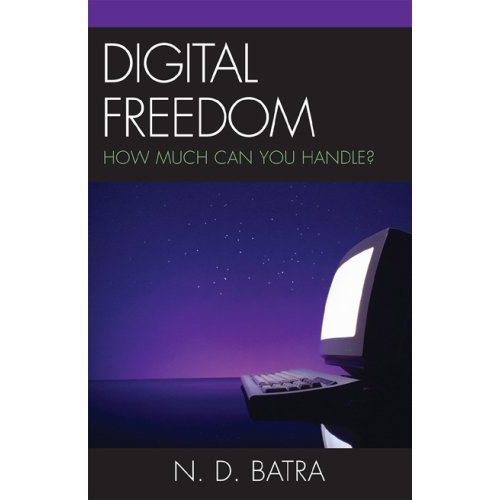Teaching in a virtual world
The Statesman
Virtual teaching has made me a global teacher, though not necessarily a great one. My graduate students are scattered all over, in Africa, North America, Asia and Europe. I am in touch with them all the time in cyberspace.
A report about technology and pedagogy said not long ago that older professors are resistant to technology and feel stressed by it. It is true, I do feel stressed, especially when the system breaks down and vendors keep pushing newer software. Not everyone perceives an overwhelming advantage to student learning by thrusting information technology in the classroom, when simple lecturing can do equally well.
Of the various instructional methods used for teaching by American professors, the use of computer-aided instruction especially at undergraduate level is limited to PowerPoint or video primarily to break the monotony of a long lecture. No one has come up with an equally good alternative to classroom lecture-discussion method that has been at the heart of teaching-learning experience since the days of the ancients. Nor has any instructional technology been developed to replace cooperative learning that occurs in group projects, field studies, recitals and performances.
Having used PowerPoint for quite sometime, I personally feel that its excessive use can be a barrier to engaging students in class. Some students positively resent the technology because it tends to limit exchange of ideas.
Why do I lecture in class?
Partly it is to establish intellectual relationship with students even if the same material may be available in the textbook. Sometime there is no alternative to lecturing especially when a tough topic and fundamentals have to be explained. It is also true that students do not learn only from the textbook, otherwise teachers won’t be needed. When the textbook along with supplementary readings is brought to bear upon a discussion topic in the classroom, you see the beginning of learning, which is further enhanced through projects, term papers, weekly essay assignments, and the stimulus of quizzes, mid-term and final examinations.
Internet online courses and software programs being advocated by publishers on American campuses are no doubt posing some fundamental questions about our traditional teaching methods. Along with classroom discussion, in which some students, especially girls, hesitate to participate, I have personally found that students very enthusiastically participate in online discussion. Many of them express themselves freely if one encourages free style discussion, de-emphasising grammar and style for the time being.
Online discussion creates a level playing field between the extrovert and the shy type. Of course students and professors miss a lot when there are no face-to-face encounters, dramatic moments which occasionally result in witticism, humour and other minor confrontations that enhance teaching and learning and make the dialogue such a joy. Information technology causes stress on the campus, simply because no one can always keep up at the cutting edge of technology. Even younger faculty members who have grown up with the Internet feel stressed due to the fact that information technology is not user-friendly. Instead of keeping ahead in their academic fields, professors are expected to master newer technology every now and then. In contrast, the chalkboard has lasted for hundreds of years. If a colourful presentation using PowerPoint does not lead to a lively discussion, it is of no use.
A mathematics professor might not feel comfortable teaching abstract concepts online to his undergraduates. It would be quite a task to explain to online students, for example, the scientific mystery of black holes, or the string theory. But in this age of abundant technological choices, when everything is being customised, the question is whether college instructions too can be made to fit the abilities and aptitude of each student.
Can information technology help us in treating different students with personalised teaching methods to enhance the learning process for a generation that is growing up with virtual games, iPods, Facebook, MySapce and Second Life?
Here are some of the random anecdotal reactions to online teaching I culled from an online discussion about online teaching:
Teaching online requires a different attitude because communication between students and teachers is asynchronous.
Many adult students find working on their own time a great advantage.
If one teaches exclusively online, it is likely to isolate one from the scholarly community.
How to get your point across without facial gestures and vocal cues is a challenge. The classroom animation, the thrill of being with students is absent online.
Lecturing is performance and some of us become teachers because it gives us a sense of participation in the learning process. Physical presence and face-to-face meetings can bring out the best in students.
Engaging students and encouraging them to do things online on their own can be a problem. The adrenaline rush that one feels in the class when there is something unexpected, the laughter, the body language and voice inflection, and the instant feedback including sleeping and yawning, all are absent in the virtual classroom.
Since most of virtual teaching has to be done through the written word, writing should be exciting and must kindle the imagination.
How to bring one’s personality into the virtual classroom is the real challenge.
And remember, admonishes a colleague, virtual communication is never lost in cyberspace. So one has to be very careful while communication with students, especially in this politically correct age.
ND Batra is the author of Digital Freedom
Wednesday, June 06, 2007
Being virtual, being everywhere, being nowhere
at Wednesday, June 06, 2007 Posted by Narain D. Batra
Topics
Technology
![]()
Subscribe to:
Post Comments (Atom)

No comments:
Post a Comment